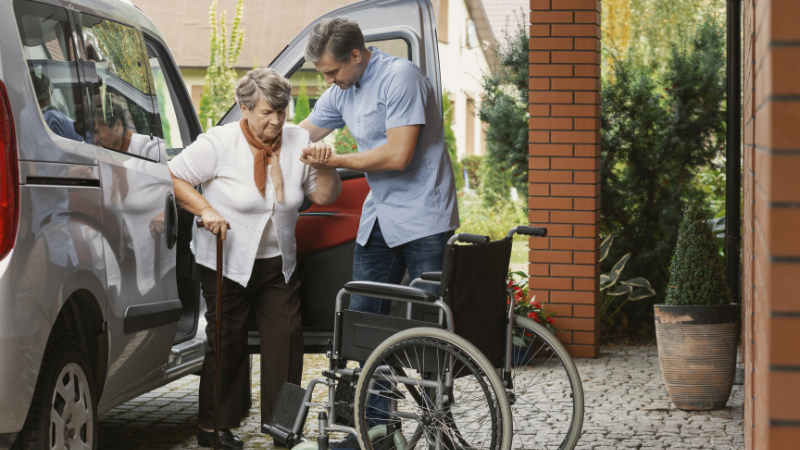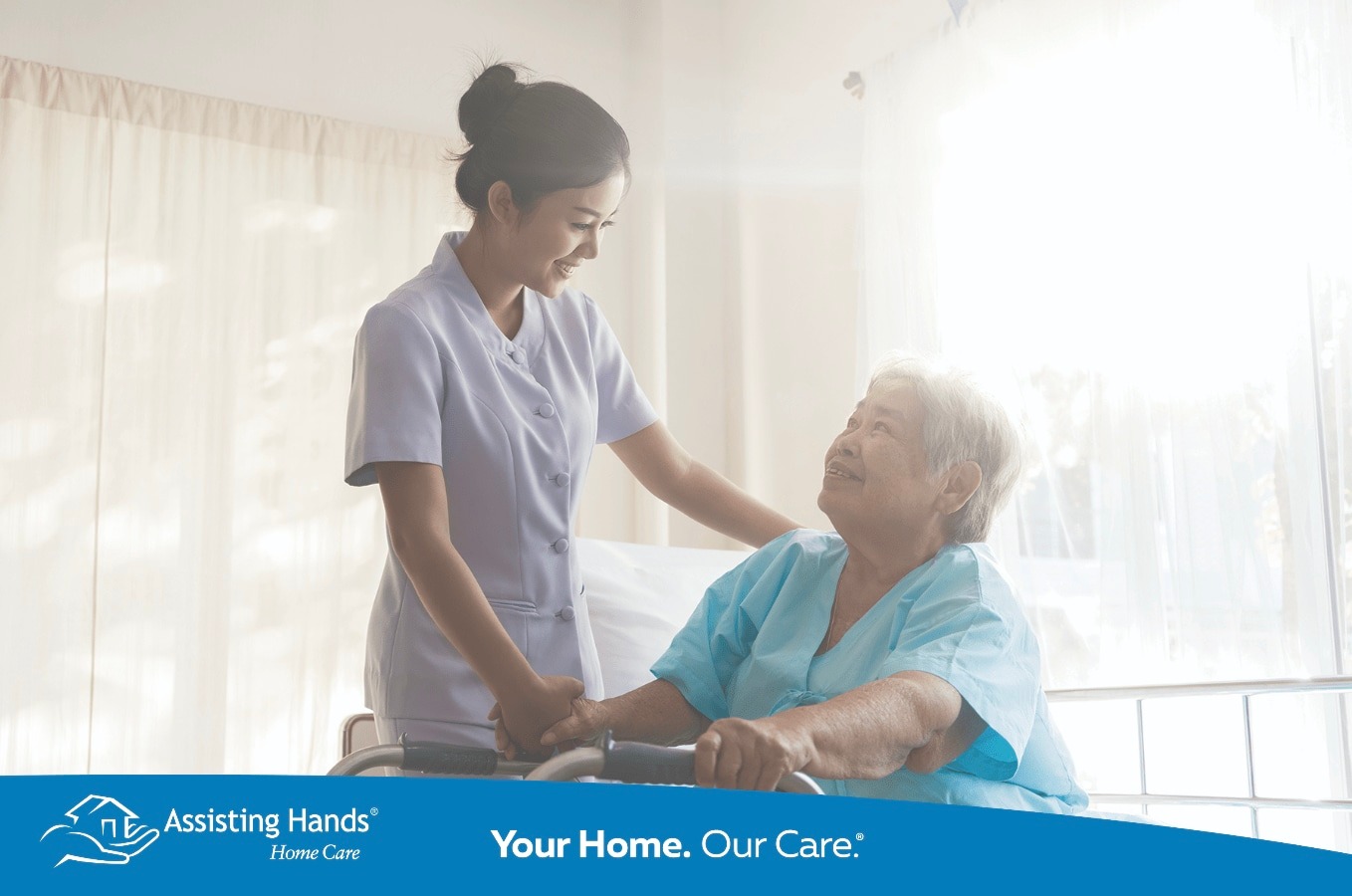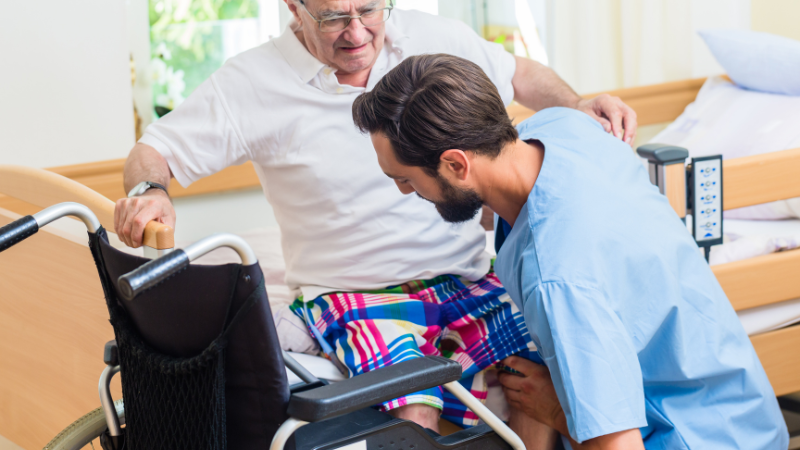

Physical tasks are oftentimes a major part of a caregiver’s responsibilities. Lifting and transferring a senior, especially one who is overweight and immobile, is challenging. Caregivers are urged to provide transfer assistance carefully to avoid injuring themselves or the senior.
Lifting and transferring elderly care recipients are necessary to keep them comfortable. A senior who has just returned from a hospital stay needs help turning in bed. Similarly, immobile older adults require the support of a caregiver to get up from a wheelchair or rise from a toilet seat.
When the aging care recipient is overweight, the tasks of lifting and transferring become seemingly insurmountable hurdles. About two-thirds of elderly individuals are overweight or obese, the latter of which is defined as having a body mass index of above 30.
How do caregivers safely lift and transfer overweight seniors?
Physical labor is inevitable during caregiving. Slightly over one-third of caregivers are over the age of 65. This is part of the reason that more than half of all caregivers injure themselves while providing hands-on care. The key to preventing injury is to handle physical tasks skillfully and safely.
1. Modify the Home
A number of assistive devices are designed to physically support seniors. Caregivers are urged to utilize these devices, which allow care recipients to pull themselves up on their own. The opportunity to perform some tasks independently provides a confidence boost to older adults.
Install grab bars in the shower and near the toilet. Add a shower bench in the shower and an adjustable seat on the toilet. A bed assist rail is helpful in the bedroom. These home modifications are minor yet give the senior increased stability and prevent injury to the caregiver.
2. Offer Mobility Aids
Walking sticks are helpful mobility aids—even for seniors who are overweight. Caregivers should specifically choose walking sticks with an appropriate weight capacity so that they don’t break or bend. Most ergonomic canes have a weight capacity of 250 to 300 pounds.

3. Maintain Good Posture
Proper posture is critical when moving a senior who is overweight. The caregiver’s back should remain straight, their shoulders back, and their head up. Place feet hip-width apart. When lifting, bend at the knees and lift with the leg muscles.
Keeping the feet apart to maintain balance, lift the senior by the hips. Avoid grabbing or pulling under their arms as these maneuvers cause them extreme pain. Caregivers should consider using a transfer belt if they are unable to hold the older adult by the hips.
4. Communicate
Even if the senior is awake and alert, communicate with them while providing transfer assistance. Let them know what is being done at each step. Encourage the older adult to work with the caregiver as much as possible to move safely.
Count to three aloud to begin the transfer. This step builds momentum and prepares the senior for the move. During the lift, both the caregiver and aging adult work together, so find a rhythm that has mutual benefits. Moving in the same direction at the same time prevents injury.
5. Clear Clutter
Prior to moving the care recipient, clear the space of loose rugs and objects that create fall risks. During the transfer, the room should not be littered with clutter. Setting up the space before moving the elderly individual makes it easier and safer to perform the task.
6. Exercise
Strength training is recommended for caregivers who expect to move overweight older adults. Focus on building upper-body strength and leg muscles to improve lifting capacity. Also important is scheduling senior-focused strength training for the aging care recipient a few days a week.
Regular walking is an effective way for caregivers to increase strength in their legs and back muscles. Also perform 8 to 10 reps of squats, 12 to 18 reps of push-ups, and 10 to 15 deadlifts. Leg exercises, like step-ups and reverse lunges, are basic exercises that develop body strength.
7. Use Lifting Tools
For safety, a single person should not attempt to lift more than 35 pounds. If it is necessary to exceed the maximum weight limit to move a senior who is overweight, use available tools. Safe lifting can be achieved with the help of transfer boards, lift beds, and sling lifts.
8. Provide Encouragement
Caregivers should remind the senior that they are available to counter physical weaknesses. If the senior’s left side is weak, for example, caregivers must strive to provide primary support to that area. It’s still important, however, that the care recipient exerts as much effort as possible during the transfer.
9. Be Patient
Lifting and transferring aging adults who are overweight demand patience. Do not rush the process. Seniors living with cognitive decline, for instance, may have slower reaction times. Be patient during the transfer or lift and give them plenty of time to adjust.
Family caregivers may need help with caring for an aging loved one. When extra support is necessary, Assisting Hands Home Care is the solution. We provide dependable elder care services in the comfort of the senior’s home and promote their overall health, wellness, and dignity.

Professional caregivers offer numerous non-medical services, including healthy meal preparation, medication reminders, help with hygiene activities, and companionship. Our caregivers are trained to provide safe transfer services, such as moving the individual from a bed to a chair or wheelchair.
Our home care services are flexible. Families may choose from various care options, like 24-hour care, live-in care, compassionate Alzheimer’s and dementia care, as well as end-of-life hospice care. We’re also available for short-term respite care and post-surgical care to promote healing.
Senior home care from Assisting Hands Home Care can be customized to fulfill the care needs of older adults. We proudly serve the elder population in Sarasota, Florida. Schedule a free in-home consultation at (941) 444-2515 to increase your aging loved one’s comfort and give them a better quality of life.

